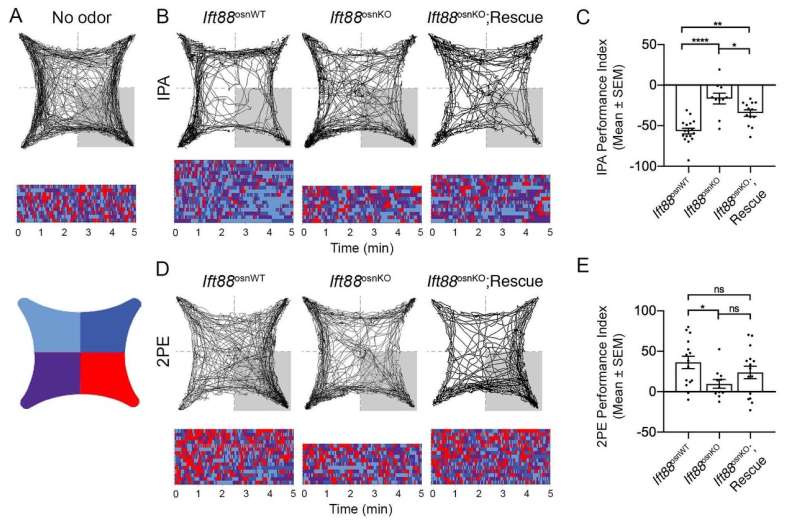Credit: Green et al., JNeurosci (2018)
Re-expressing a protein critical for the detection and perception of odors restores function of the olfactory system in a genetic mouse model of lost hair-like cellular structures known as cilia, according to research published in JNeurosci. This may represent a promising therapeutic strategy for a group of human diseases that can cause loss of smell.
By replacing a lost gene, Jeffrey Martens and colleagues demonstrate the ability of the mouse olfactory system to heal itself. The therapy increased the number and length of cilia as well as the responses of olfactory sensory neurons. The researchers also achieved restored connections between the sensory neurons and the olfactory bulb and behaviors in odor-guided tasks.
These results held across the developing and adult olfactory systems, suggesting that a similar treatment if translated to humans could be effective for patients of a wide range of ages.
More information: Peripheral gene therapeutic rescue of an olfactory ciliopathy restores sensory input, axonal pathfinding, and odor-guided behavior, JNeurosci (2018). DOI: 10.1523/JNEUROSCI.0084-18.2018
Journal information: Journal of Neuroscience
Provided by Society for Neuroscience























